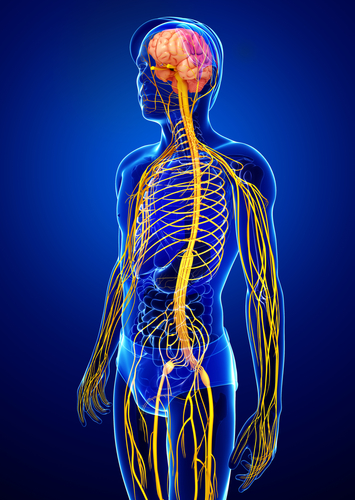Degree of Posture Difficulties in MS Linked to Areas of Nervous System Most Damaged by Disease

Posture control is a complex skill, requiring different areas of the nervous system to work well and to work together — but the damage caused by multiple sclerosis complicates such nervous system multi-tasking, leading to postural problems and the well-established tendency for MS patients to fall.
Several neurological systems are known to control motor skills and posture: the pyramidal system, composed of long nerve fibers that start in the brain and terminate in the brainstem or spinal cord; the cerebellar system, which is responsible for coordination and precision movement; and the sensory system, which allows the brain to interpret signals from the immediate environment.
The study, “Static Posturography and Falls According to Pyramidal, Sensory and Cerebellar Functional Systems in People with Multiple Sclerosis,” published in the journal Plos One, looked at specific neurological functional systems and how they affect posture control parameters and the incidence of falls in MS patients.
In total, 342 patients with a mean disease duration of 8.2 years and mean age of 46.6 were included in the study. Patients were divided into groups according to their pyramidal, cerebellar, and sensory functional system scores, as determined by the Expanded Disability Status Scale (EDSS), a method of quantifying disability in MS.
Researchers found that 83.6% of these MS patients had damage to the pyramidal system, 50.3% showed cerebellar impairment, and 52.6% sensory system impairment. More than one-third (36.8%) showed damage to only one of these three neurological systems, while the majority — 63.2% — showed changes in two or all three systems.
MS patients with disease-related damage only to the pyramidal system had lesser postural stability than patients with cerebellar and sensory impairments. But the addition of sensory impairments to pyramidal dysfunction did not worsen a person’s postural control. Not surprisingly, patients with damage to only a single neurological system showed better stability compared to those with multiple system impairment.
Researchers also classified almost half of the patients studied, or 166 of the 342, as fallers, with higher EDSS scores compared to non-fallers (4.2 versus 3.3). They then looked at the percentage of fallers with single posture system difficulties, and found that 44.3%, of them had damage to the pyramidal system, 33.3% an impaired cerebellar system, and 19.5% sensory impairment, indicating the different levels of involvement of these systems in postural control. Again, those patients showing changes in all three neurological systems made up the largest proportion of fallers, reaching up to 65%.
“In summary, this study confirms that disorders in neurological functional systems generate different effects on postural control and incidence of falls in the MS population. While pyramidal involvement is a primary factor negatively affecting static stance in PwMS [people with multiple sclerosis], patients with sensory impairments have a relatively preserved postural control,” the researchers concluded.
“Future research studies should investigate whether balance (and fall reduction) interventions, tailored according to the level of involvement of the pyramidal, cerebellar and sensory systems, are more beneficial than traditional rehabilitation,” they added.






